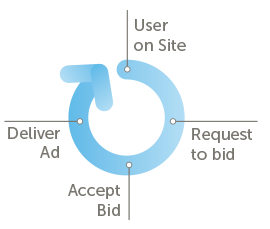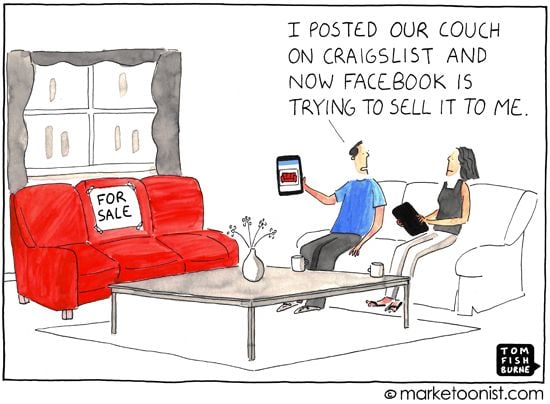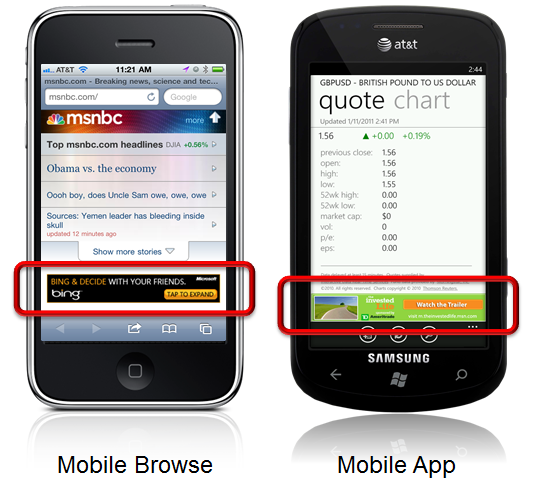What is real-time bidding and does data support that media buyers should pay lower prices because they are advertising online using real-time bidding technology? Great question. Real-time bidding technology enables real-time media buying, which is indeed a smart and efficient way to advertise online. This doesn't necessarily mean that impressions purchased should be significantly cheaper.
What Is Real-Time Bidding And Should It Be Cheap?
4 Myths You Should Ignore About Retargeting
Retargeting is a highly effective online advertising technique that directs your ads to people who have previously expressed an interest in your product or service by visiting your website. It allows you to remind them how great your product or service is, and why they should choose your brand.
Despite the fact that retargeting has become an integral digital advertising tool, many misconceptions still exist about it.
Here are 4common retargeting myths, and why you can ignore them:
Myth #1: Retargeting is only for Retail
There is a common misconception that retargeting is exclusively for retail businesses. While it’s true that e-commerce businesses make the most use of retargeting, it can provide significant benefits to businesses in all sectors.
If you are directing traffic to a lead capture form or landing page, retargeting can help keep your brand at the front of users’ minds while they are in the evaluation process. This is especially helpful in a B2B context because the sales cycles tend to be longer than in B2C transactions. Serving retargeted ads, such as static banner ads or dynamic display ads, will keep your company ahead of the competition, and nurture leads through the funnel.
Read MorePersonalization and Display Advertising: How Personal Is Too Personal?
In an overcrowded and competitive marketplace, companies will do anything to make their brand and products stand out from the crowd. One of the many benefits of online advertising is the ability to tailor adverts based on first and third-party data.But is tailoring effective and how far should you take it?
Let’s take the gaming industry as an example. Consider some of the detail you could potentially get from placing a retargeting pixel on your website:
- The user’s account name
- The sport they last bet on
- How much they bet
- If they won or lost
- How long since their last bet
Knowing all this personal information and using dynamic ads, you could create a very personalized message, such as: ‘Hi Jim, congrats on the $1,000 win yesterday. Fancy a bet on the game tonight? Bet now!’
Psychological Tricks To Boost Your Retargeting Campaigns
People desert websites for various reasons. If you’re lucky, they’ll come back to finish what they started; if you’re unlucky, they will forget all about it. ‘Abandoners’ can be hot prospects, andcompanies often invest a lot of time and moneyon retargeting (paid media) and remarketing (sending a series of abandonment recovery emails), to persuade consumers to re-visit their purchases.
Here are some techniques from the world of psychology that you canincorporate into your remarketing or retargeting campaigns, to stimulate the ‘buy’ button in your visitors’ brains.
1. Foot in the Door Technique
Sometimes visitors abandon because they are not ready to buy yet, i.e. some shoppers like to add items to their carts over several visits before they check out.Although these visitors may convert later, you can reinforce their decision to buy from you by using the Foot in the Door technique.The principle behind the technique is this: Make a small request of your customer (a micro-conversion) first, such as asking them to join a mailing list orcreate a wish list for future purchases. If they agree to your first request, they will be more likely to respond to your next and bigger request.
Psychologists theorize that the technique works due to the human’s tendency to feel indebted to someone after they’ve had some level of interaction with that person.
Steel Advertising Creates Top Digital Campaign For Higher Education
“In a year unlike any other, the Steel Advertising campaign for Texas A&M San Antonio broke new ground in the digital advertising market. While we expect things to change and evolve in 2021, we believe that the digital advertising program developed by Steel will serve as a model for Higher Education online campaigns in the future.” - Eric Greener, Founding Partner, ExactDrive Inc.
Texas A&M University-San Antonio has been one of the fastest-growing Universities in the Texas A&M System in recent years. The University is dedicated to an experiential learning curriculum that allows students to get ahead in their career while still in college. The University needed a digital campaign that would align A&M-San Antonio’s messaging with prospective students’ immediate needs. Right in the middle of the campaign, COVID-19 hit and stakes got higher.
Read More4 Tips To Improve The ROI Of Your Online Advertising Campaign
Competition for ad space is fierce. It’s a growing trend that’s hardly surprising given the advances of technology and how the world now likes to consume content. Whether you use Google AdWords, Dynamic Ads or Facebook Ads, content marketing or some sort of mixture, the essence of online advertising is simple: you must make sure that your ads get seen, they need to be effective and you should aim to avoid wasting valuable ad spend.
So how can you make sure that your campaign achieves what you want it to?
Check out our 4 tips.
1. Have laser-targeted ads.
As the saying goes, you can’t please all the people all of the time. An advertising campaign should be geared towards your audience.
Read More4 Tips That Will Make You A Stronger Online Media Buyer
Be better at online media buying. That isn't just friendly advice, it's essential if you want to get your hands on a piece of success. You might have a great display advertising campaign in the works, but that doesn't mean you won't be searching for ways to enhance your tactics for direct-response. Buying display ads, banners and/or text can be a fantastic way to engage customers.
The way that you manage your campaign is up to you. You may focus your advertising scheme to be oriented to direct-response, including product sales and lead generation. On the other hand, you may focus your advertising completely on branding, in an attempt to build name recognition and brand awareness over time.
Read More5 Deadly Retargeting Mistakes To Avoid
Retargeting is a powerful digital marketing technique that can improve brand recall and revenue. Retargeting drives potential customers back to your website by targeting users who have previously visited your website but didn't make a purchase or take a desired action. While retargeting can be an extremely effective, high-ROI solution, if you make a mistake, it can leave you worse off than you started.
Avoid these fivecommon retargeting mistakes , and you’ll be sure to reap the rewards of a successful retargeting campaign.
Read MoreMobile Advertising: 4 Tips To Be Successful
Mobile advertising is becoming more and more popular and important all the time. It’s no secret that we’re deserting our desktops for tablets and smartphones; in fact, mobile traffic is set to overtake desktop this year. With a mobile device people can do so much more on the Internet: anytime, anywhere. So above anything else, today’s marketing teams should be focusing on these ‘always-on’ consumers.
Take a look at the stats to see how this mobile advertising trend is exploding:
- UK advertisers invested an average of £1 in every £6 they spent on digital mobile advertising last year.
- Spend on mobile advertising doubled year on year to pass the £1bn mark for the first time. And mobile ad spend is expected to nearly double again in 2014 to almost £2.26 billion (32% of total digital).
- On the back of this, m-commerce is expected to increase by 53.3% in 2014, more than triple the 15% growth rate for retail ecommerce.
Read MoreThe Importance Of Mobile Advertising
Mobile advertising is not only alive and well but is fast becoming a key component to a growing amount of successful digital media plans. It’s been predicted that 1.75 billion people worldwide will own a smartphone by the end of 2014. Mobile phone users are rapidly switching over to smartphones as devices become more affordable and 3G and 4G networks advance. It’s this smartphone explosion that gives brands the opportunity to connect with consumers in a real-time, real-world environment. It’s an advertiser’s dream.
But it’s not all plain sailing, and in some ways, mobile is a complex advertising method. One of the reasons advertisers and marketers are faced with challenges is because, from an advertising perspective, mobile is so different to web. Browser cookies aren’t available to follow people and get to know their likes and dislikes; user attention is short and frequent, spread between apps and browsers, maps and messaging; and although smartphone users check their phones up to 150 times a day, it’s often only for seconds at a time.
Read More










